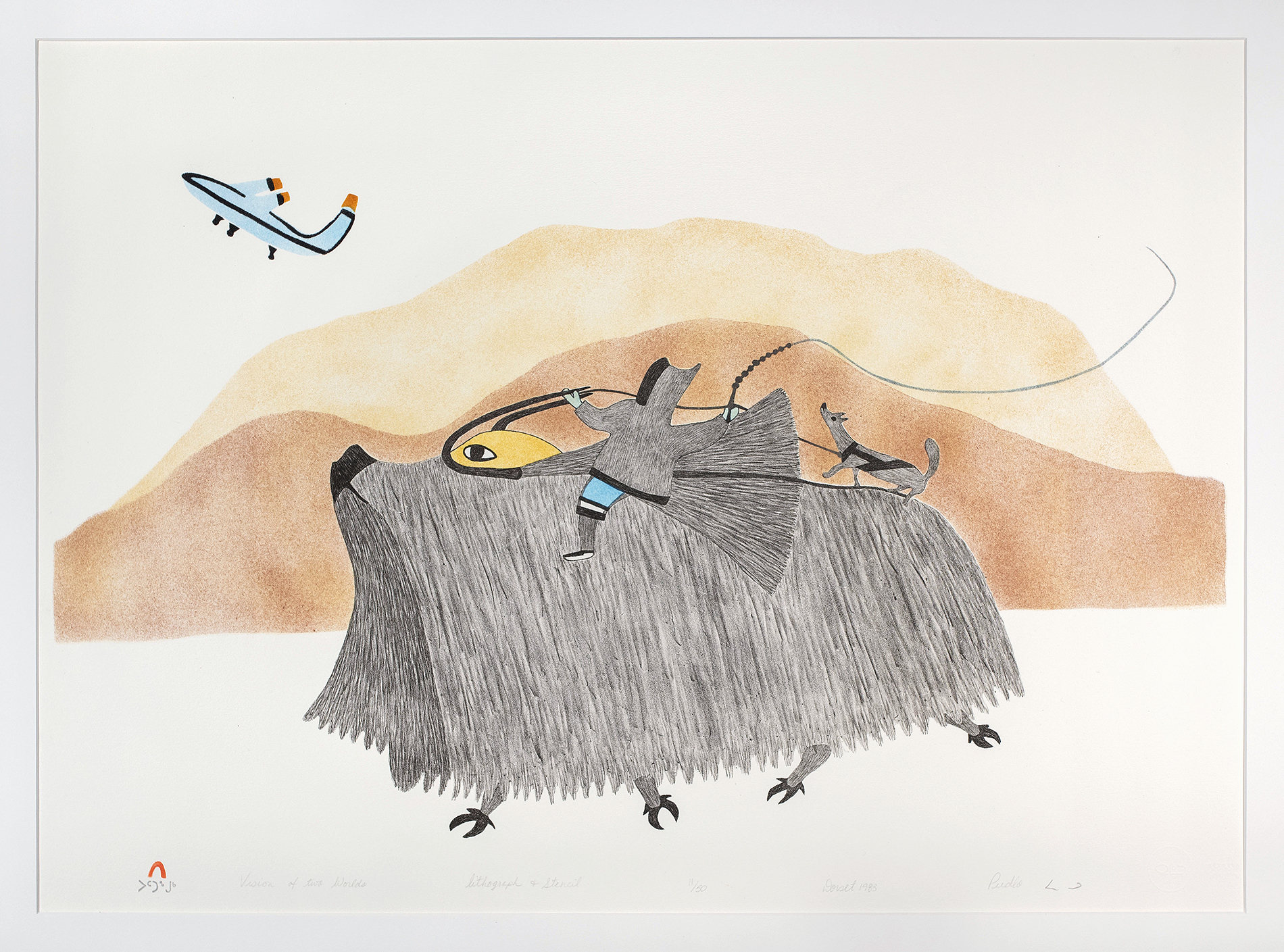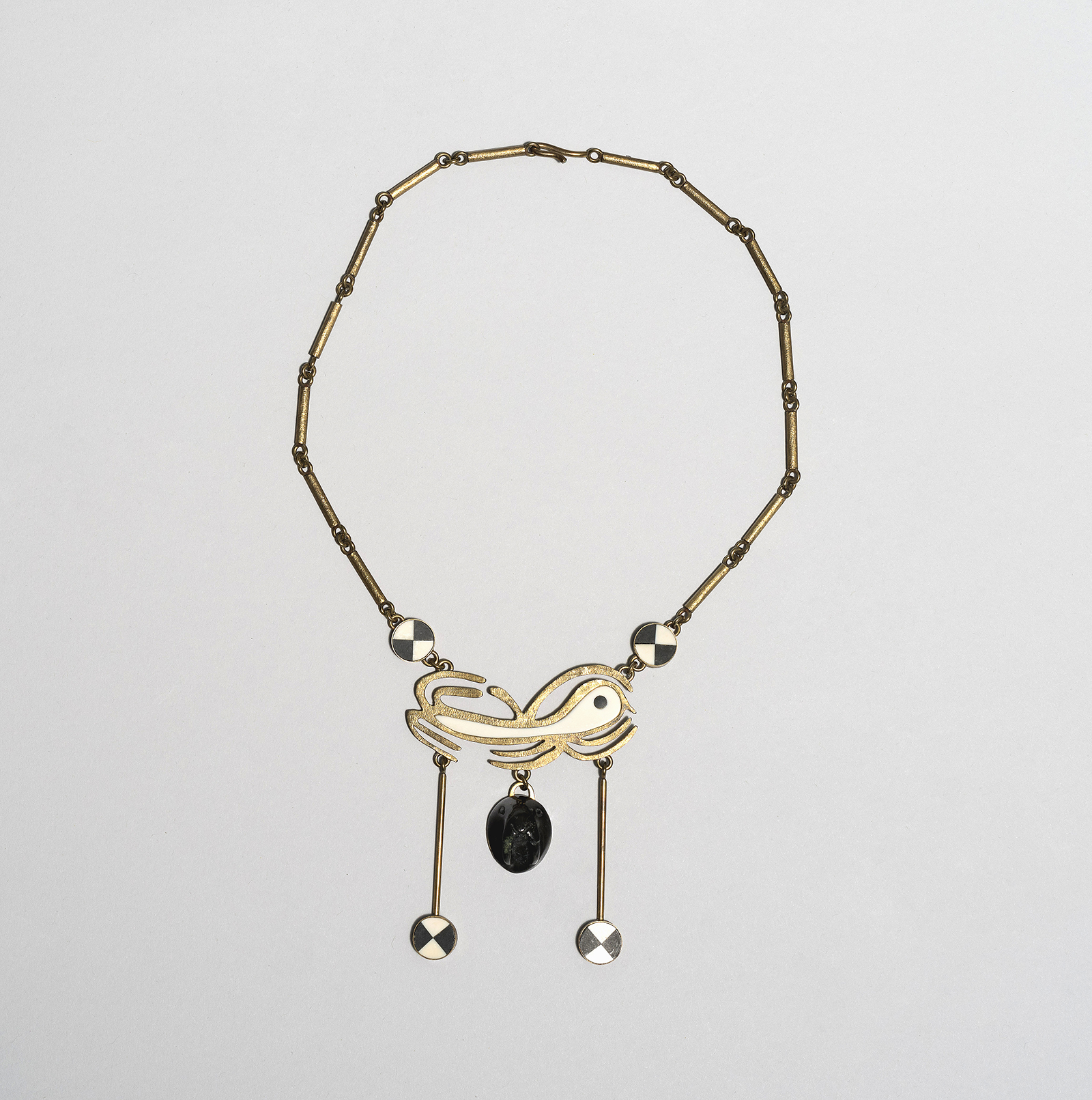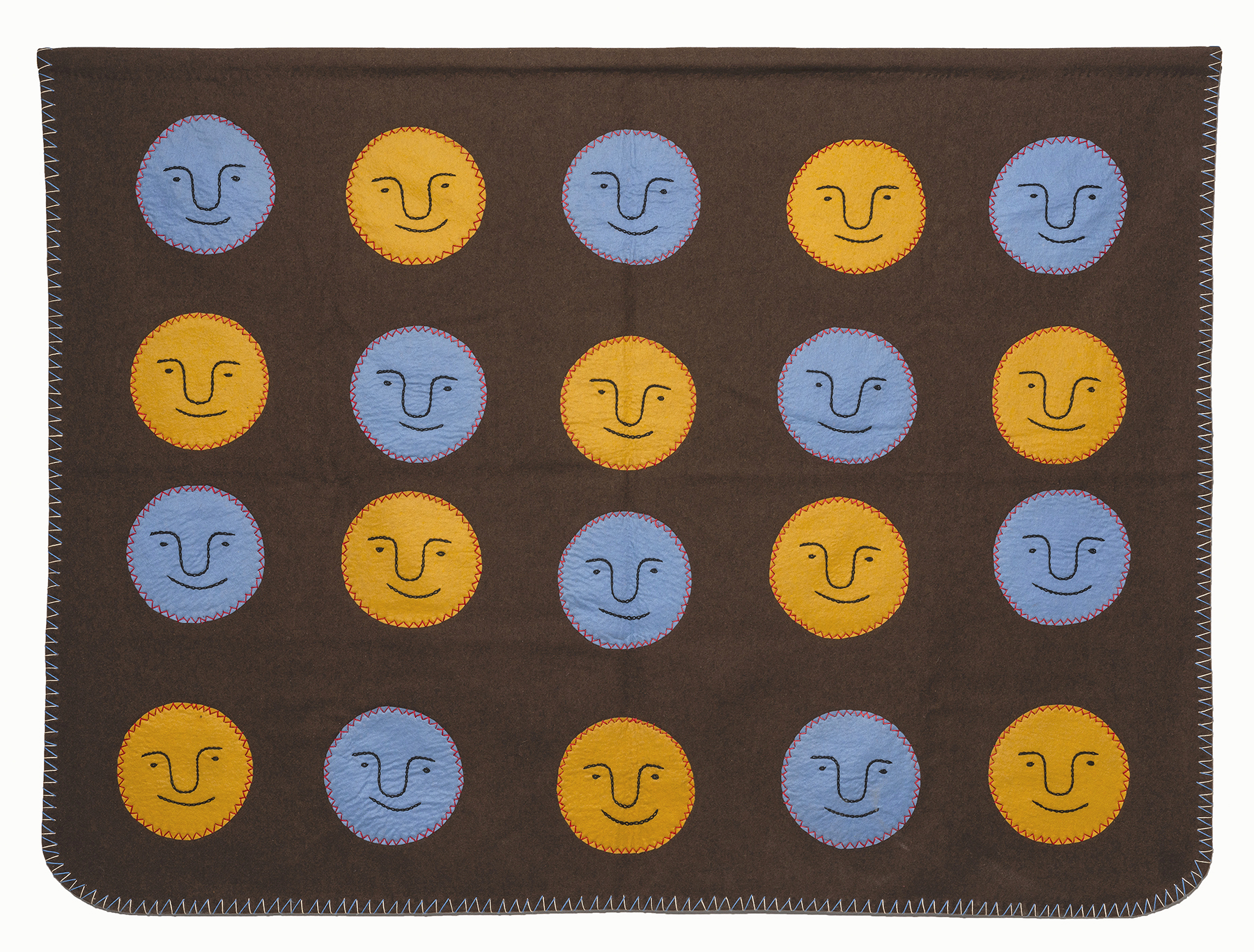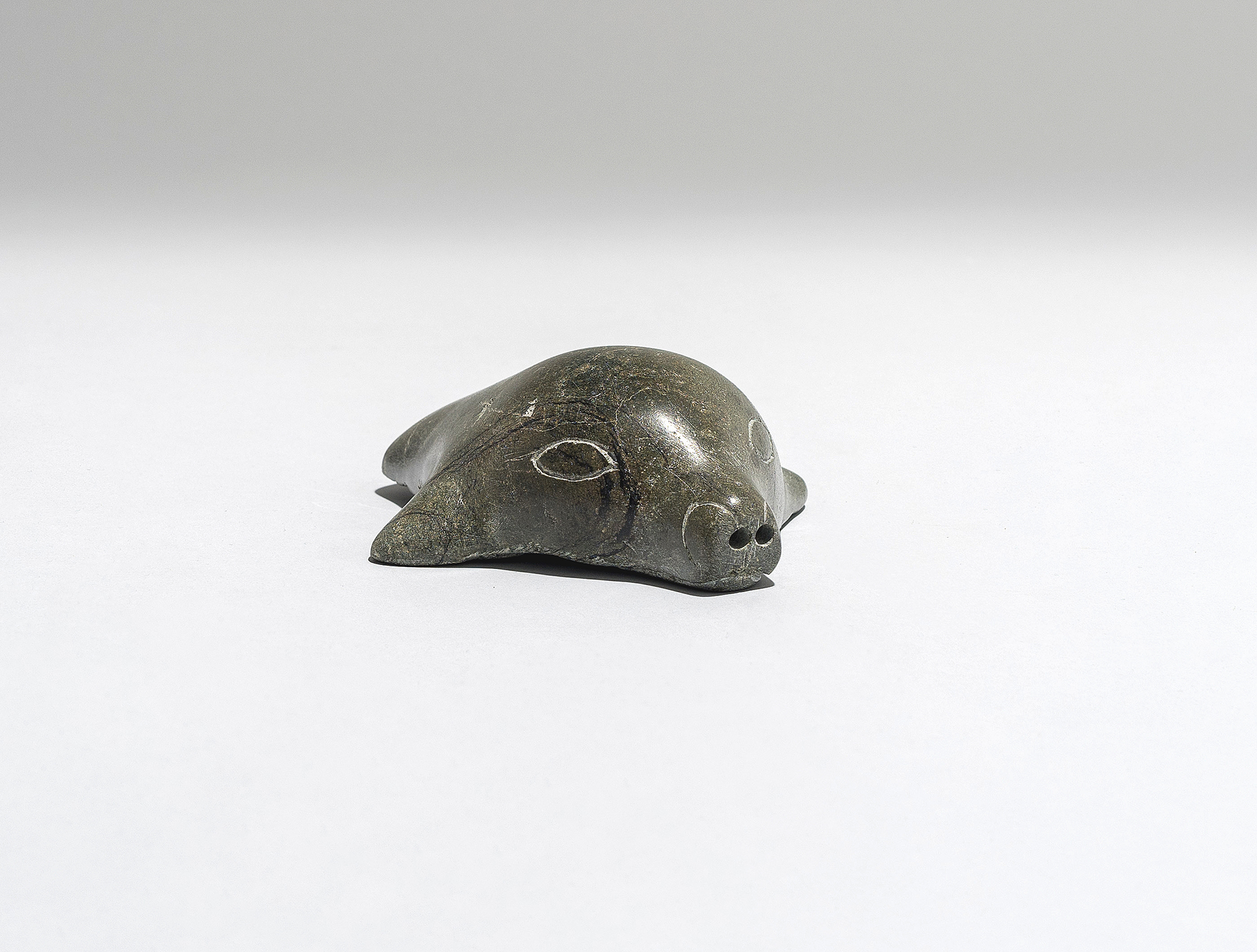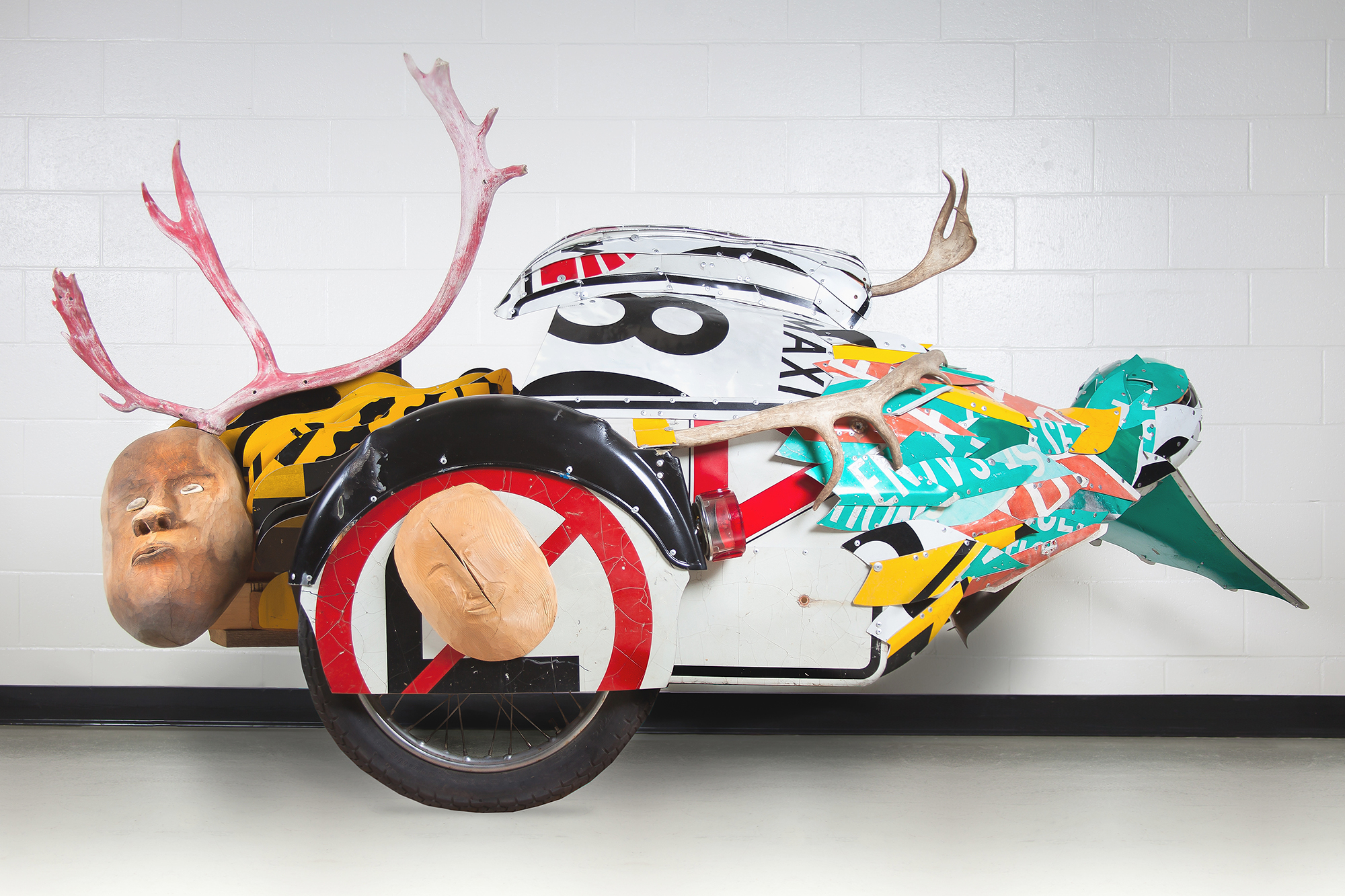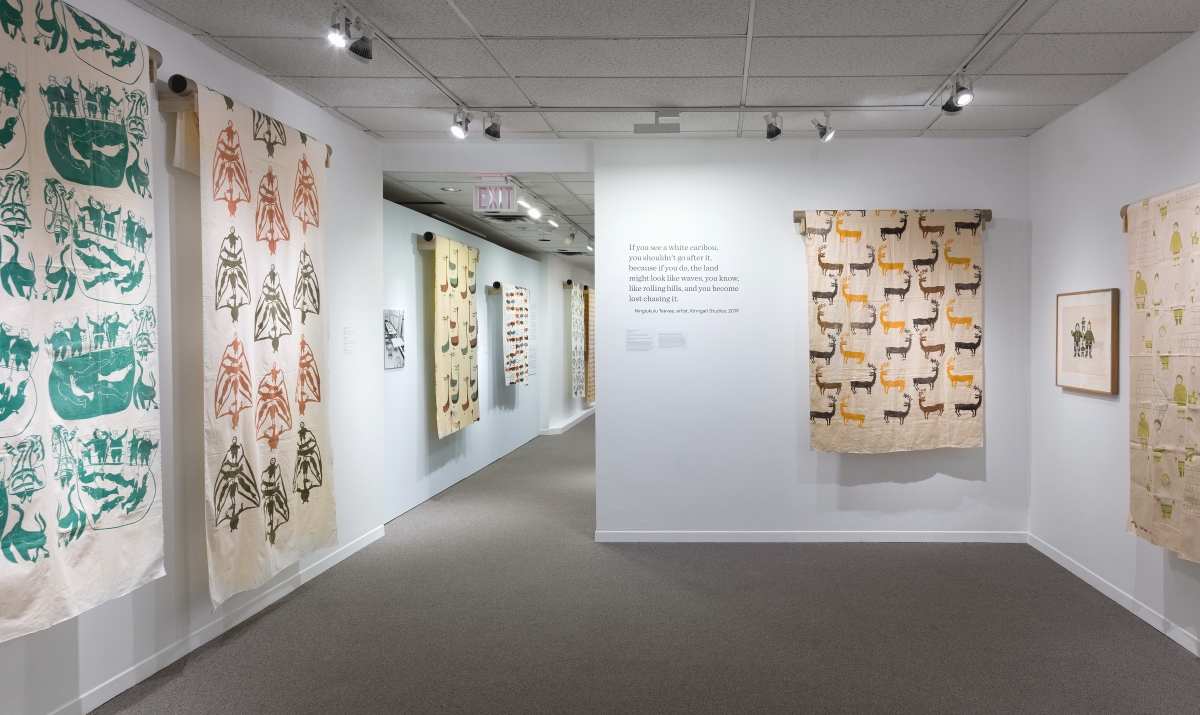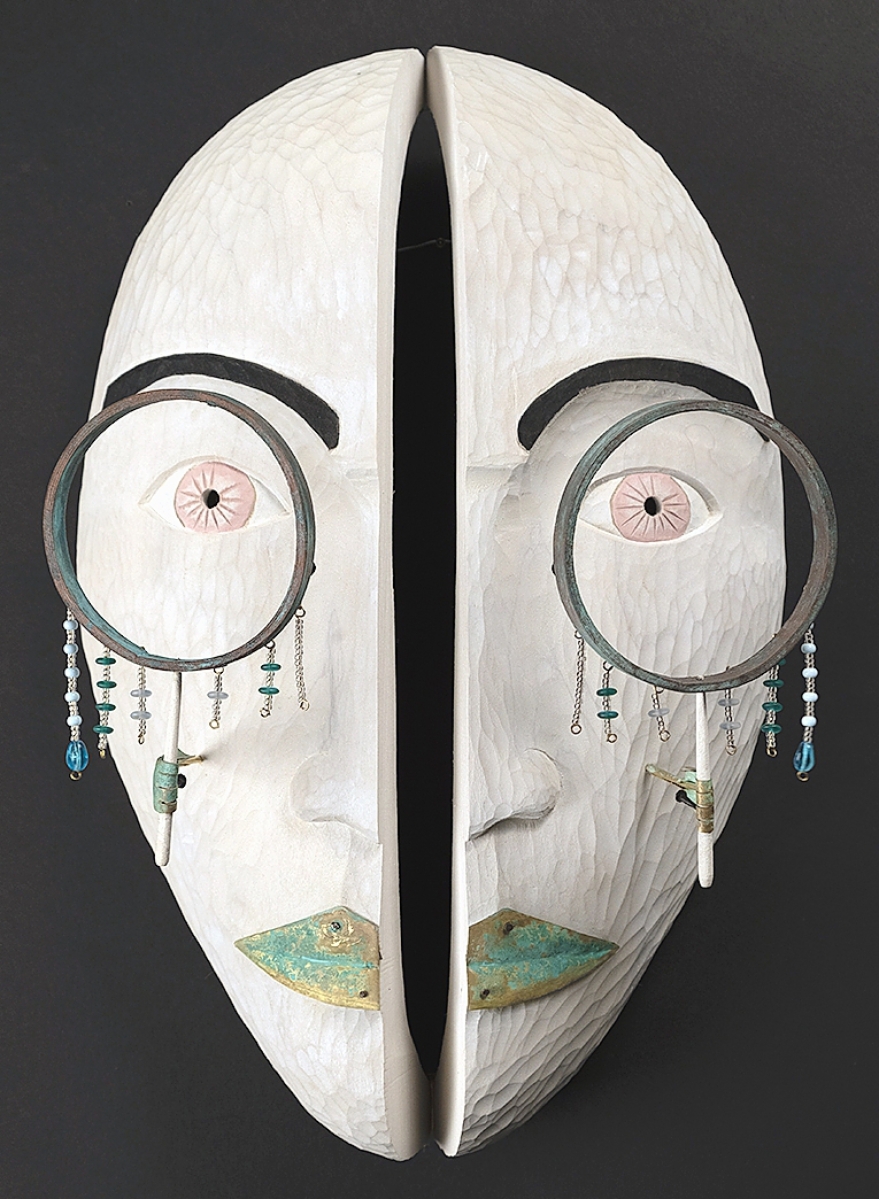
“Looking into My Beat” by Drew Michael, 2020. Basswood, patinated brass, acrylic, beads, wire. Collection of the artist. Qaumajuq at the WAG.
By Laura Beach
WINNIPEG AND TORONTO – The Arctic views of luminist painter William Bradford (1823-1892), whose first journey to the far north was in 1861, and Gorham’s “Polar” ice bowl of around 1870 are vivid reminders of a late Nineteenth Century cultural craze stimulated by exploration and territorial expansion. A similar confluence of events is today ushering in a new chapter in Inuit art, a term encompassing an increasingly diverse body of work by natives of a far-flung, circumpolar landscape.
The changes include advances in telecommunications and, ominously, a warming climate that is opening the once all-but-inaccessible region to trade, tourism and global competition for military and economic dominance. By far the most encouraging trend is the growing control Inuit people are exercising over their own narrative. In what became the world’s largest lands-claim settlement, Canada in 1999 recognized the Inuit-governed Territory of Nunavut, previously part of the Northwest Territories. Following years of inquiry, a federal commission in 2015 recommended landmark reforms meant to redress generations of systemic disenfranchisement of Native Canadians, an initiative popularly known by the shorthand term “Reconciliation.”
These and other considerations offer a backdrop to Qaumajuq, the spectacular new addition to the century-old Winnipeg Art Gallery – called the WAG – which holds the largest public collection of contemporary Inuit art in the world. A parade of prominent Canadians, Prime Minister Justin Trudeau first among them, celebrated Qaumajuq’s virtual debut in late March. Nearly 1,400 miles away in Toronto, the Textile Museum of Canada is illuminating a recently rediscovered cache of printed textiles made by Inuit artists at Kinngait Studios in Nunavut in the 1950s and 1960s. On the commercial front, the long prominent Dorset Fine Arts, established in Toronto in 1978 as the marketing arm of the native-owned West Baffin Eskimo Co-operative, and Feheley Fine Arts, Canada’s leading specialist dealer in the material, have been joined by First Arts, a new online auctioneer exclusively devoted to Inuit, First Nations and Metis art. Another auctioneer, Waddington’s, began hosting sales of Inuit art in 1979.
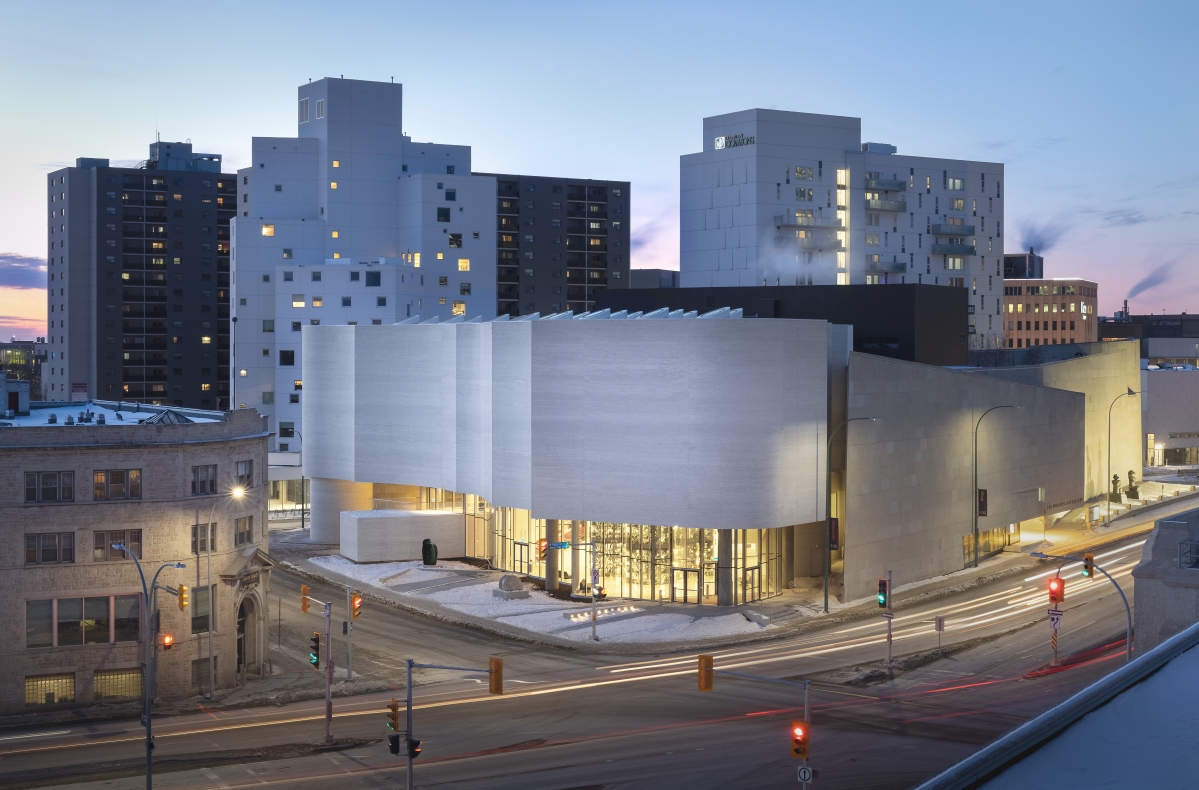
Los Angeles architect Michael Maltzan designed Qaumajuq, built in partnership with Cibinel Architecture of Winnipeg. Photo Lindsay Reid. Courtesy Qaumajuq at the WAG.
The modern market in Inuit art dates to 1948, when James A. Houston (1921-2005) began his 14-year Arctic sojourn. At the behest of the Canadian government, the Ontario-born artist and civil administrator, who later became a design director for Steuben Glass and spent his last years in Stonington, Conn., in 1959 established the most successful of the Inuit print studios in Cape Dorset, now called Kinngait. Houston prodded carvers to work in stone – earlier carvings were often in bone or whale ivory – and introduced printmaking techniques he learned in Japan. Familiar with the Finnish firm Marimekko and other Modernist fabric designers of the era, Houston’s first wife, Alma, encouraged Kinngait’s short-lived experiment with textiles printing, marketed by Canadian Artic Producers, whose fine arts division she headed.
The WAG began collecting Inuit art in 1957 after then director Ferdinand Eckhardt saw work for sale across the street at the Hudson’s Bay Company. Canadians think of the Manitoba capital, by car two and a half hours north of Grand Forks, N.D., as a gateway to the west and, because of its long prominence as a trading center, a window on the north. The WAG was the first Canadian museum to appoint a curator of Inuit art, a position the much-published Darlene Coward Wight, now head of an expanded department, has held since 1986. Augmented with an additional long-term loan of 7,400 pieces from the Government of Nunavut, the WAG’s existing 14,000-object Inuit art collection includes pieces donated by Ian Lindsey, a collector who acquired Inuit art from the first show Houston helped organize for the Guild of Craft in Montreal in 1949.
“It’s been a journey for me as a Canadian and as a museum director,” reflects WAG director and chief executive officer Dr Stephen Borys, named to the Order of Manitoba last summer for his sustained leadership in the field. He began planning for Qaumajuq – whose name in Inuktitut means “it is bright, it is lit” – soon after joining the museum in 2008, raising close to $70 million for the expansion. “As we imagined building a center dedicated to indigenous art, there were many layers of history and symbolism to be considered. We wanted to do it in a respectful, honest way,” says the director, who collaborated with members of WAG’s Indigenous Advisory Circle, representing, among others, the four regions of Inuit Nunangat that extend across the Canadian north.
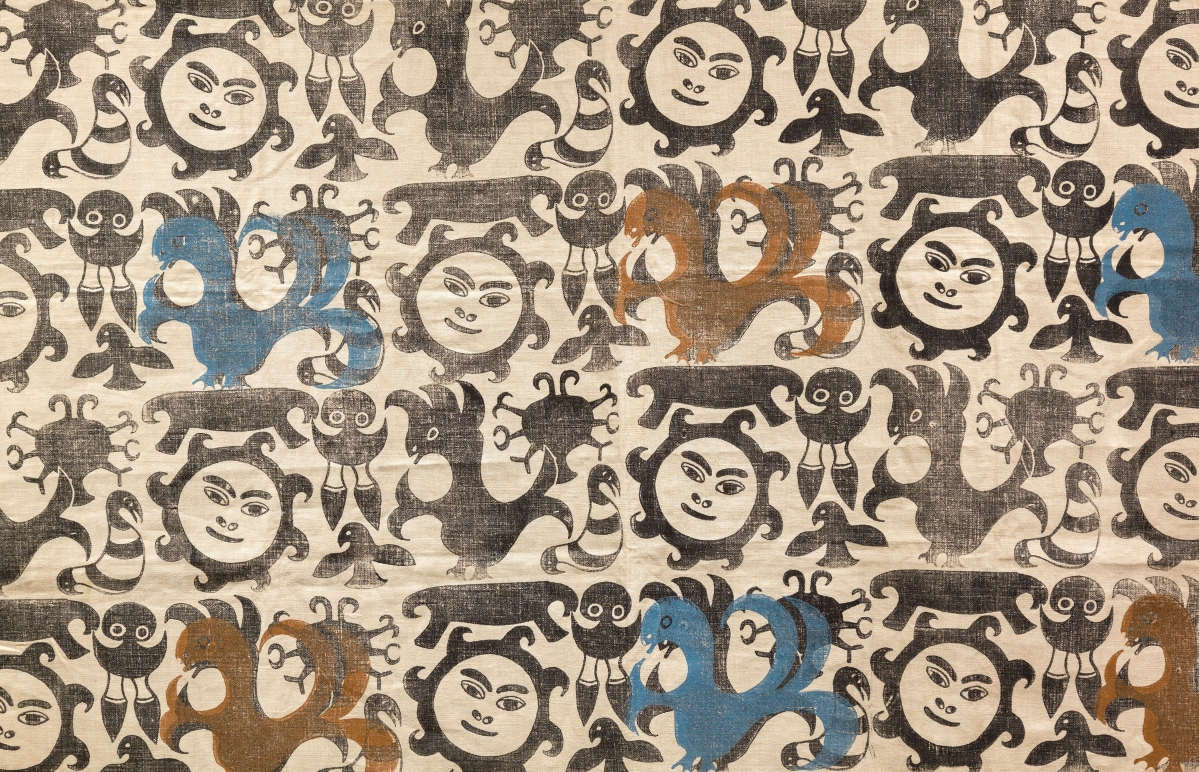
Detail of a design by an unidentified artist, 1950s-60s. Linen, stencil or block printed. On loan from the West Baffin Eskimo Co-operative, T2017.20.31, reproduced with the permission of Dorset Fine Arts. Courtesy Textile Museum of Canada.
A turning point came when Borys flew Los Angeles-based architect Michael Maltzan, winner of the museum’s international design competition, and his family to the Arctic. Borys recalls, “Michael was inspired by the light and color, the topography, the huge expanses and physical distances between communities and by the experience of meeting people in their homes and studios. He went back to the drawing board and produced new plans.”
Working with Cibinel Architecture of Winnipeg, Maltzan created a 40,000-square-foot, granite-clad wing that connects to the old complex on all levels. The largest of the new galleries, Qilak, meaning “Sky” in Inuktitut, is 8,000 square feet with 22 skylights and 30-foot-high ceilings. Borys says, “The gallery is a nebulous shape, neither square nor rectangular, with constantly changing light from the skylights, which provide glimpses of sky and keep you connected to the exterior environment.”
As if encased in ice, a three-story, glass-walled showcase called the Visible Vault displays 4,500 stone sculptures and is the first thing most visitors to Qaumajuq see. Carvings in ivory and bone have different climate needs and are housed elsewhere in the museum, as are larger stone carvings.
“It took me ten months to design the presentation and another six weeks for us to install it,” says Dr Wight, who was finalizing the presentation when we spoke. “I thought it was important for people to see the different materials, styles and artists associated with 34 communities across the north. I’m looking forward to visitors from the north finding work here by their family members.”
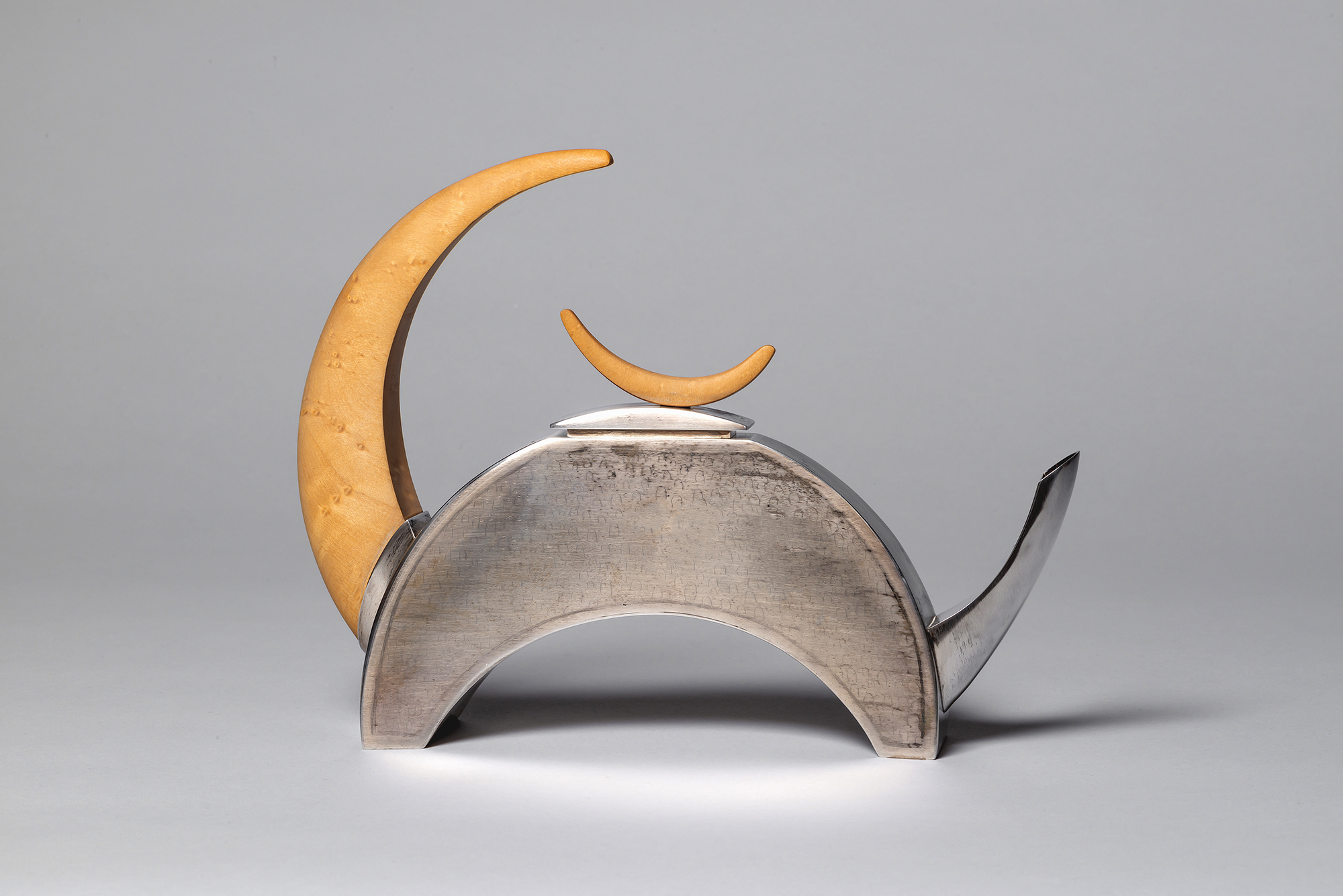
“Subtle-tea” by Michael Massie (Happy Valley-Goose Bay, b 1962), 1997. Silver, wood. Collection of the Winnipeg Art Gallery, gift of the Canadian Museum of Inuit Art, 2017-564. Courtesy Qaumajuq at the WAG.
For all the interest in historic Inuit art, it is the contemporary realm that most excites some experts. “There’s been a seismic shift in the last two decades,” says Pat Feheley, owner of Feheley Fine Arts, a Toronto gallery founded by her father M.F. (Budd) Feheley, an avid collector turned private dealer who developed a passion for Inuit art in the 1950s. A past president of the Art Dealers Association of Canada, Pat Feheley moved her gallery to new quarters in 2011, in part to accommodate the larger scale and more diverse media of recent Inuit work.
Asked to contribute an essay to Journey North: The Inuit Art Centre Project, the new book accompanying Qaumajuq’s opening, Feheley says, “Qaumajuq is important because it’s a community partnership and a great source of pride for people celebrating their own cultural history. So many amazingly creative, contemporary Inuit artists are now living in the Canadian south, or spending time in both north and south, and they are really showcased in Qaumajuq’s opening display, ‘INUA.'”
Imaginatively choreographed by an all-Inuit curatorial team led by Dr Heather Igloliorte, a Labrador-born curator and historian of indigenous art who teaches at Concordia University in Montreal, and project managed by WAG assistant curator Jocelyn Piirainen, “INUA” features pieces by 90 Inuit artists working in all media, from traditional carving and printmaking to cutting-edge digital compositions and installations.
wag.jpg)
Qaumajuq’s galleries feature abundant light and space. Inuit visitors to the museum have likened the skylights in the main gallery, Qilak, to igloo apertures and ice-fishing holes. Photo by Lindsay Reid. Courtesy Qaumajuq at the WAG.
Included in “INUA,” Michael Massie (b 1962) is a Labrador-based sculptor and silversmith known for his sculptural teapots. Feheley recalls, “There was initially a bit of market resistance to this kind of new imagery, but the museum’s imprint makes it easier for collectors to embrace it.” In 2003 Feheley organized a solo show for Annie Pootoogook (1969-2016), a Kinngait artist whose drawings were at the time remarkable for their raw references to contemporary life. The dealer says, “Toronto’s international exhibition venue for contemporary art, the Power Plant, saw the presentation and mounted its own Pootoogook show in 2006. That really kick-started interest in Inuit art among collectors of contemporary art. A whole new demographic became my audience.”
At the Textile Museum of Canada (TMC), the exhibition “Printed Textiles from Kinngait Studios” spotlights a little-known group of mid-Twentieth Century fabrics that, influenced by Scandinavian and other non-native prototypes but animated by Inuit style and sensibility, seem delightfully fresh today.
“We wanted to make the story as it emerged and the fabrics accessible to the community, members of whom have family ties with the artists,” says TMC senior curator and manager of collections Roxane Shaughnessy, who collaborated with the West Baffin Eskimo Co-operative. Plans for an exhibition and catalog arose after the fabric, recently rediscovered in storage at Dorset Fine Arts, was transferred to TMC for safekeeping and study.
As early as 1956, James Houston envisioned the production and sale of handprinted textiles as a way of bringing much-needed revenue to people forced into the wage economy by the disruption of their traditional way of life. As Shaughnessy relates, “At one point, printmakers were creating prints and fabrics from the same drawings at the same time. The influence each medium had on the other is fascinating. Whereas the print program at Kinngait became world famous, the fabric, marketed to decorators and designers and for various reasons hard to produce in the north, was not sustainable. Kinngait Studios halted fabric production in 1968, though designs were subsequently licensed out for other uses. In the late 1960s, Toronto-based fashion designer Anne Gamble created women’s garments based on Kinngait Studios’ original designs, and in the early 1970s the company Inunoo (see www.inunootextiles.com) was founded and licensed by Dorset Fine Arts.”
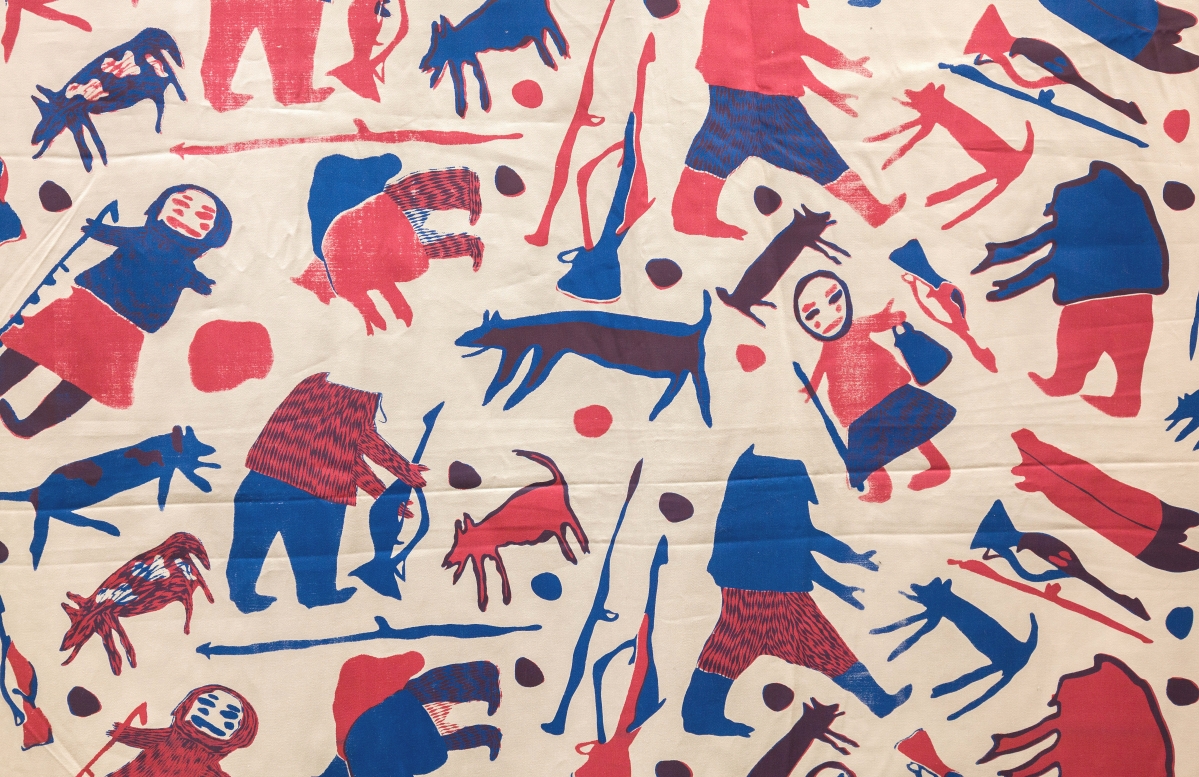
“Parr’s People” by Parr (1893-1969), 1950s-60s. Cotton sateen twill, screen printed. On loan from the West Baffin Eskimo Co-operative, T2017.20.112, reproduced with the permission of Dorset Fine Arts. Courtesy Textile Museum of Canada.
Kinngait textiles reflected broader cultural trends. Shaughnessy notes, “Certainly after World War II and with the rise of what we call discretionary income, there was a desire for more worldly, contemporary, even ‘exotic’ textiles. In Canada this coincided with an incipient nationalism and a feeling that it was important for Canada to promote Canadian arts throughout its cultural sphere.” Award-winning Kinngait textiles were printed for Expo ’67 and were used in Moshe Safdie’s Habitat housing development and in the Canadian Pavilion.
Experimentally printed by hand with a block or stencil and later screen printed, mainly on linen or cotton, the bold, colorful Kinngait patterns celebrate the Inuit place in the natural world and are replete with animals, supernatural beings and mythological references. In all, the West Baffin Eskimo Co-operative registered 51 designs in the Canadian Industrial Designs Database between 1965 and 1969, of which more than 30 are represented in the nearly 200 samples on loan to TMC.
“We identified 21 Inuit artists and printmakers involved in the textiles workshop but aren’t yet able to attribute most of the designs to specific artists, something we’re fairly confident will happen over time. We immediately made the archive accessible to the Kinngait community and hope to continue working with them to build on the information we’ve been able to uncover,” says the curator.
wag.jpg)
“Yesterday and Today,” right, a 2014 oil stick and graphite drawing on paper by Elisapee Ishulutaq (Pangnirtung, 1925-2018) is part of Qaumajuq’s inaugural exhibition, “INUA.” Courtesy Qaumajuq at the WAG.
A special feature of the exhibition is its emphasis on contemporary Inuit fashion as reflected in the designs of Martha Kyak of InukChic, Nooks Lindell of Hinaani Design and Tarralik Duffy of Ugly Fish. Shaughnessy says, “It was important to bring the story into the present. Many young Inuit artists are able to sustain their businesses through social media. It’s a hopeful model for those who choose to live in the north but can take part in the economic life of the south.”
Currently closed, TMC hopes to reopen “Printed Textiles from Kinngait Studios” for several more months beginning in September if health protocols allow. The show will travel to Kinngait and Winnipeg. Meanwhile, a variety of related presentations can be found online. They range from a talk by Shaughnessy on the TMC website to a virtual launch of the companion catalog, Printed Textiles from Kinngait Studios, on YouTube. A digital, interactive app can be accessed at the link https://tmc-exhibition-pwa.netlify.app/. It allows visitors to hear directly from the Inuit community through audio or video interviews with contemporary artists from Kinngait Studios and Inuk fashion designers.
In Conclusion
Qaumajuq is at 300 Memorial Boulevard in Winnipeg. For information, 204-786-6641 or www.WAG.ca/qaumajuq.
The Textile Museum of Canada is at 55 Centre Avenue in Toronto. For information, 416-599-5321 or www.textilemuseum.ca.
Feheley Fine Arts is at 65 George Street in Toronto. For information, 416-323-1373 or www.feheleyfinearts.com.
For more on auctions and exhibitions organized by First Arts, go to www.firstarts.ca.
Based in Toronto, the Inuit Art Foundation and its publication Inuit Art Quarterly are definitive sources for information on the field. To access, go to www.inuitartfoundation.org.

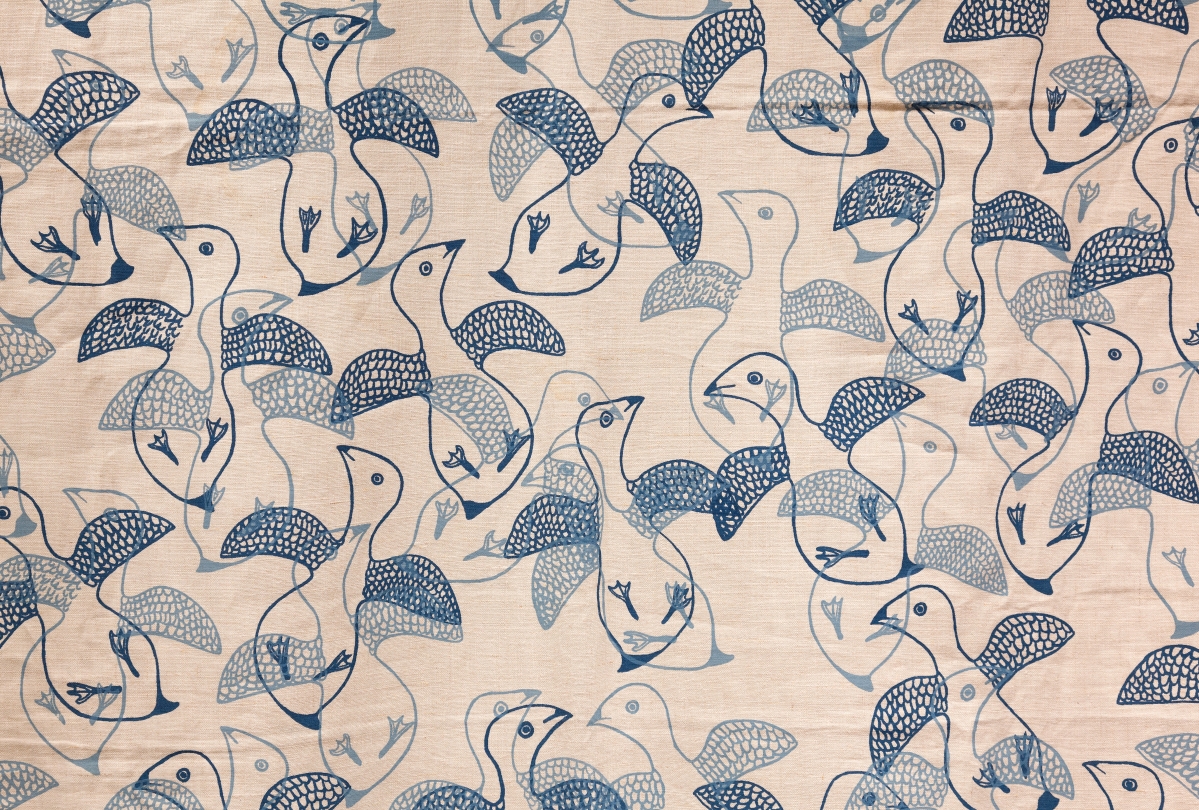
_b._1963._asivaqti_palirniq_(weathered_hunter)_2016._graphite_coloured_pencil_ink_on_paper._collection_of_the_wag..jpg)
wag.jpg)
._untitled_(nunavut)_2020._wallhanging._collection_of_the_artist.wag.jpg)
._hopedale_mission_buildings_2017._digital_composition_on_paper._collection_of_the_artist.wag.jpg)
.wag.jpg)
